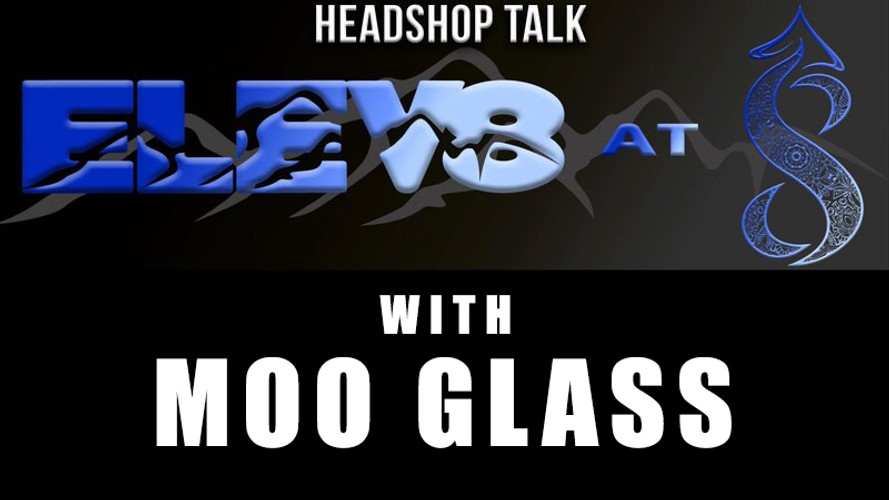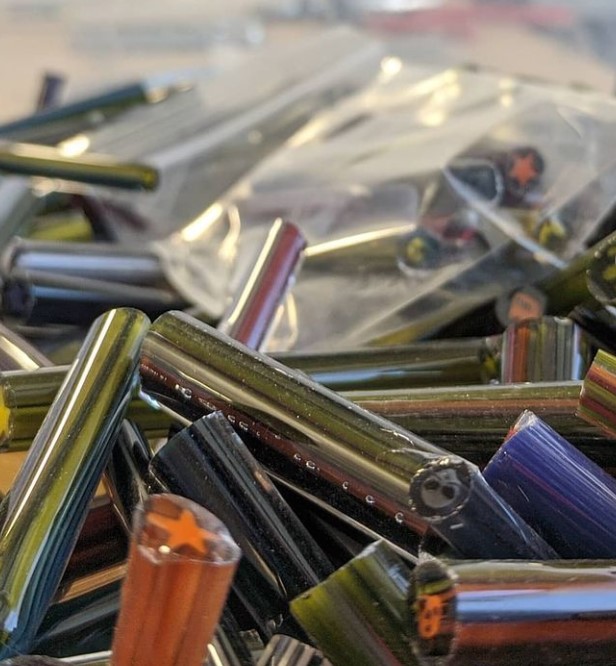
We talked to glassblower Moo Glass about his career and what lies in the future for his brand. Moo Glass' journey in the world of cannabis glass began when he was just a teenager in high school. He was already interested in cannabis at that time, and he used to go to a local head shop called Soulshine Glass to look at the pieces that they had for sale, all of which were handmade by local glassblowers. Moo Glass was artistically inclined throughout his life, excelling in ceramics and painting, and the glass pieces that they had for sale at Soulshine Glass appealed to Moo Glass' artistic curiosity but as a high school student he was still too young to purchase cannabis glass for himself.

Throughout much of high school Moo Glass had worked as a ski instructor, so when he graduated he decided to move from North Carolina to Breckenridge, Colorado to attend the local community college there. He spent most of his free time in Breckenridge skiing, but one day the owner of a local glassblowing shop let Moo Glass jump on a torch and try his hand at glassblowing. He was instantly hooked, and soon thereafter Moo Glass purchased a Mirage torch and began learning some foundational techniques. He moved to Fort Collins to study agricultural science at Colorado State University, and continued to dabble with glassblowing on and off. In this early period of his career Moo Glass was not working on the torch with any regularity, but he was getting advice from a local blower named Jason Hedman of Hedman Headies, an O.G. cannabis glassblower who came out of the early glassblowing scene in Eugene, Oregon in the late 90's, and though he only answered occasional questions Jason Hedman would be the closest thing that Moo Glass would ever have to a formal mentor.

After living in Fort Collins for a while and improving his glassblowing skills, Moo Glass started occasionally working with the Colorado Color Company, an organization that sells glass colors, provides rental spaces for glassblowers, and which does a lot of work to help Colorado glassblowers learn and sell their pieces. Colorado Color Company became a valuable resource for Moo Glass to be able to sell his work and make a reliable living, and he was able to focus on glassblowing more regularly than he had in the past. As his skills continued to improve, Moo Glass contacted his favorite glass gallery back in North Carolina, Level 42 Gallery & Studio, a studio which strictly only carried work made by local North Carolina artists but since he was born and raised in the region they agreed to begin carrying and selling his work, despite the fact that he lived in Colorado. Having these outlets completely changed the trajectory of Moo Glass' glassblowing career, and roughly one and a half years ago he was able to commit to blowing glass as his full-time career.

Now, Moo Glass is quickly becoming a household name in the cannabis glass industry. He is probably best known for his millefiori and murrine works which are made in the traditional style pioneered by Giacomo Franchini. These are images that are made from stacking long rods and stringers which are then combined into a cane, and when the cane is sliced the cross sections contain an image. Murrine or millefiori canes are typically sliced thinly and then worked into glass art in various ways. They are sometimes stacked end-to-end to create wall sections for vessels that will have complex colorful patterns and images. Moo Glass is quickly becoming a master millefiori artist, and he often sells cane rods and coins to other glassblowers who use his millefiori designs in their creations. Moo Glass has also taken a formal class from millefiori artist Ryan McCluer which greatly helped to elevate his skills with millefiori and murrine work.
Moo Glass is making big plans for the future of his brand, and his main goal is to develop a signature line of products that have aesthetic and functional characteristics that are uniquely associated with the Moo Glass brand. Moo Glass believes that millefiori and murrine sections are too abstract to be a signature characteristic, so he's experimenting with designs and functionality to hopefully develop a signature line of recyclers and matching mini tubes. In the meantime Moo Glass is working to get caught up on his backlog of custom orders, and he had to stop accepting new custom commissions two months ago. Go check out his amazing work over on the Moo Glass Instagram page. (@mooglass)







